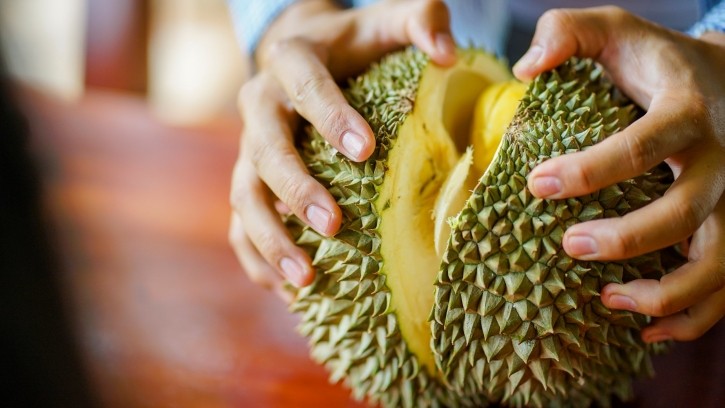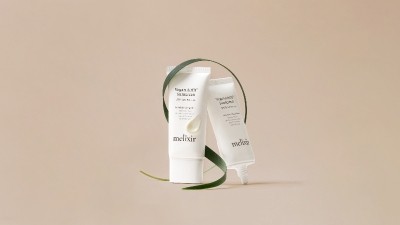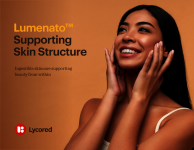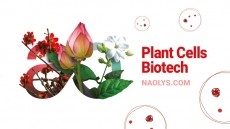King of fruit for cosmetics? Antioxidant and whitening properties found in durian extracts

In the study, polysaccharide extractions from the durian peel, pulp, seeds, white and green fruits-hull were prepared with various methods – dried then powdered, freeze-dried, filtered, or boiled – and later assessed.
The research found that this revealed significant amounts of antioxidant activity (p < 0.05).
Additionally, when a gel formulation was tested among the volunteers, they did not experience any skin irritation and the gel format exhibited good stability in its formulation.
Aside from being an edible fruit, durian extracts have been used in the medical and pharmaceutical industry for its “antibacterial activity as well as antidiabetic, anticholesterol, antioxidant, digestiva, anti-inflammatory, and neuroprotective effects.”
Additionally, previous literature reported that extracts from the seed, peel, and fruit of durian have been shown to reduce melanin pigmentation and oxidative stress on the skin.
However, findings specific to a durian native in South East Asia – known as Durio zibethinus – have not been reported.
Researchers from University of Phayao and Phuket Rajabhat University therefore wanted to investigate the physicochemical properties and biological activities specific to this species for cosmetic purposes.
Key findings
The paper reported that that green fruit-hulls were significantly more absorbent than white fruit-hulls, which indicated less time taken for the skin to absorb moisture (p < 0.05).
“When relative concentrations of polysaccharide extracts (green fruit-hull and white fruit-hull) increased, the viscosity also increased. Green fruit-hull and white fruit-hull extracts can be used to increase the viscosity and consistency of cosmetic products.”
The absorbency effect was not evident in the other parts of the fruit.
A significant result was also noted for antioxidant activity of the peel, seed, green and white fruit-hulls (p <0.05).
The different extracts were then combined with one another to determine if they present with higher phenolic content compared to individual extracts:
“High synergism was observed for mixtures of the seed extract, with significantly (p < 0.05) higher total phenolic contents than the individual extracts. Previous studies reported total polyphenols were found in durian extracts (seeds and peels). Therefore, durian wastes are potential sources of phenolic content.”
Overall, the results indicated that combined extracts had a significantly higher phenolic content (p < 0.05). Explaining that, the paper reported: “Skroza et al. concluded that mixed phenolic compound samples presented both synergistic and antagonistic effects, with antioxidant activity dependent on compound structure, number, distribution of substituents, and concentration.”
For the cosmetic formulation stability, the gel was stored at different temperatures: room temperature, four degrees Celsius and 45 degrees Celsius. While there was a change in colour, the odour stayed the same and change in pH level was not significant.
There was also no irritation on the skin when the volunteered were patch-tested with the product – demonstrating its safety for topical use.
“Durian extracts showed promising physicochemical properties and biological, antioxidant, and anti-tyrosinase activities, with interactions between combined extracts having a synergistic effect. The extracts are used as antioxidants and whitening agents in cosmetic products.
“Crude durian extract can be used as an active ingredient, while the polysaccharide extract can be used as an active ingredient and as a raw material to improve cosmetic formulation stability and increase viscosity. The polysaccharide extract showed rheological and sensorial properties, with a moisturizing effect on the skin.
“Formulations containing the extract did not irritate the skin, and no allergic reactions were reported by the volunteers. The product was considered safe to use as an active ingredient in cosmetic formulations. Utilization as an active ingredient and raw material in cosmetic products adds value to durian by-products,” the paper concluded.
Source: Cosmetics
“Physicochemical Properties, Antioxidant and Anti-Tyrosinase Activities of Durio zibethinus Murray and Value Added for Cosmetic Product Formulation”
https://doi.org/10.3390/cosmetics10030087
Authors: Mungmai, L., et al.
![Pupa Milano’s new skin care developments to capture the Asian market. [Pupa Milano]](/var/wrbm_gb_food_pharma/storage/images/_aliases/wrbm_medium/publications/cosmetics/cosmeticsdesign-asia.com/headlines/market-trends/what-s-trending-the-most-read-stories-on-apac-beauty-market-and-consumer-insights19/16482803-1-eng-GB/What-s-trending-The-most-read-stories-on-APAC-beauty-market-and-consumer-insights.jpg)

![When disposed of in landfills, coffee grounds contributes to the generation of methane, a greenhouse gas that contributes to climate change. [Getty Images]](/var/wrbm_gb_food_pharma/storage/images/_aliases/wrbm_medium/publications/cosmetics/cosmeticsdesign-asia.com/headlines/market-trends/upcycled-ingredients-still-linked-with-lower-prices-and-quality-in-sea/16439921-1-eng-GB/Upcycled-ingredients-still-linked-with-lower-prices-and-quality-in-SEA.jpg)






![[Getty Images]](/var/wrbm_gb_food_pharma/storage/images/_aliases/wrbm_tiny/publications/cosmetics/cosmeticsdesign-asia.com/china/china-focus-latest-developments-in-china-s-booming-beauty-market22/17370102-1-eng-GB/China-focus-Latest-developments-in-China-s-booming-beauty-market.jpg)
![YSL's LoveShine launch has sparked a demand surge in Japan. [YSL]](/var/wrbm_gb_food_pharma/storage/images/_aliases/wrbm_tiny/publications/cosmetics/cosmeticsdesign-asia.com/article/2024/04/24/ysl-loveshine-launch-propels-lip-gloss-sales-to-record-highs-in-japan-since-2020/17372064-1-eng-GB/YSL-LoveShine-launch-propels-lip-gloss-sales-to-record-highs-in-Japan-since-2020.jpg)
![There is significant scope for innovation and new launches in the hair repair sector, especially in soaring markets such as China. [Getty Images]](/var/wrbm_gb_food_pharma/storage/images/_aliases/wrbm_tiny/publications/cosmetics/cosmeticsdesign-asia.com/article/2024/04/24/croda-zeroes-in-on-hair-repair-solutions-as-damage-hair-concerns-surge-in-markets-like-china/17362731-1-eng-GB/Croda-zeroes-in-on-hair-repair-solutions-as-damage-hair-concerns-surge-in-markets-like-China.jpg)



![Lubrizol has extended its partnership with C-beauty major PROYA. [PROYA]](/var/wrbm_gb_food_pharma/storage/images/_aliases/wrbm_tiny/publications/cosmetics/cosmeticsdesign-asia.com/headlines/brand-innovation/lubrizol-bullish-on-potential-of-c-beauty-growth-potential/17362515-1-eng-GB/Lubrizol-bullish-on-potential-of-C-beauty-growth-potential.jpg)


